What Are 4-Way Adjustable Shocks? The QA1 MOD Series
The QA1 MOD series shocks are designed for the ultimate in control and versatility, offering adjustability and control for various high-performance driving scenarios that demand high force curves. Designed with 4-way adjustability—fully independent high-speed and low-speed adjustment of both compression and rebound—these shocks allow users to fine-tune suspension dynamics to optimize performance in different driving conditions, from drag racing and pro-touring to competitive autocross and road course outings.
What Is 4-Way Adjustability?
At the heart of QA1’s MOD series shocks is the 4-way adjustable valving and its unique adjustable valve packs, providing separate controls for high-speed and low-speed compression and rebound, with 24 clicks of total adjustment. Understanding how this works is crucial for maximizing vehicle performance.
- Compression refers to how the shock absorber reacts to forces when the suspension compresses, such as when a car hits a bump or undergoes hard braking.
- Rebound is how the shock controls the extension of the suspension after compression, affecting how quickly the tires return to contact with the road surface.
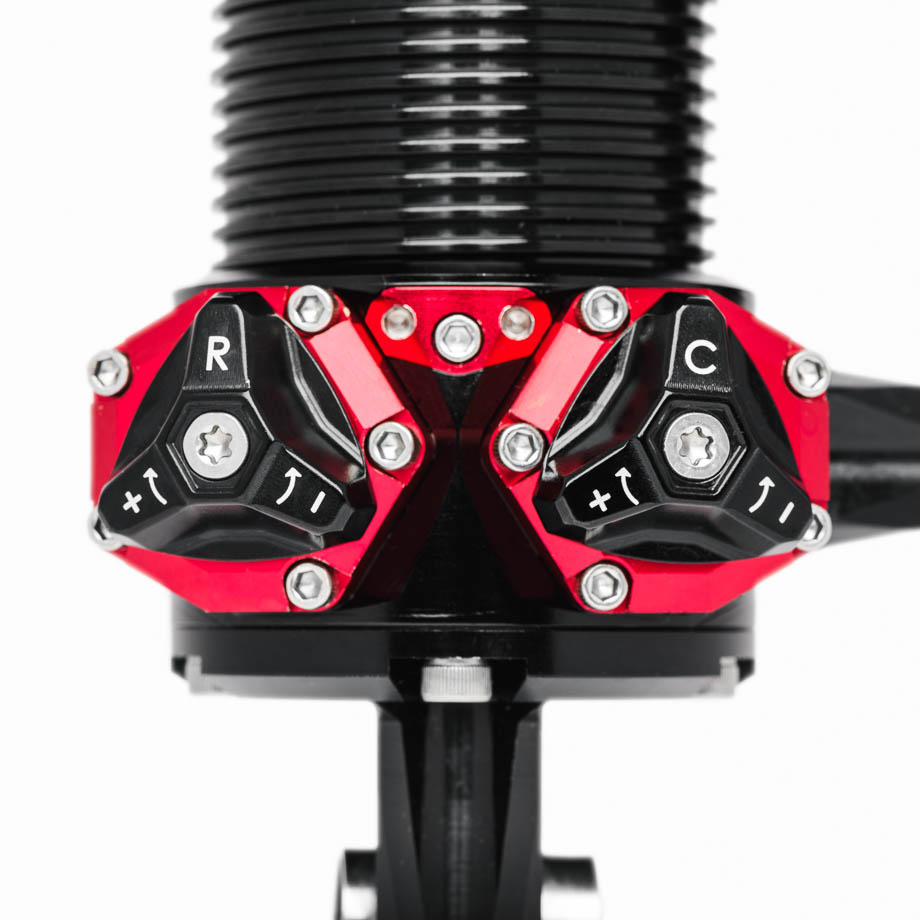
These adjustments are categorized by high-speed and low-speed actions, which are determined by the shock’s shaft speed, not the vehicle’s speed. Low-speed adjustment deals with slower suspension movements—think of body roll during cornering or squat during acceleration—while high-speed adjustments manage the shock’s response to quick impacts, such as potholes or rumble strips.
- High-speed actions typically occur when the shock’s shaft moves at a rate greater than 6 inches per second, such as when the vehicle encounters harsh road conditions.
- Low-speed actions refer to shaft speeds below 6 inches per second and include more gradual changes like body roll during cornering or front-end lift under acceleration.
The separation of these two adjustment categories is critical because they affect the vehicle in very different ways. A driver can maintain a soft suspension for comfort over small road imperfections while stiffening the system to handle abrupt impacts effectively.
High-Speed and Low-Speed Adjustments: Why They Matter
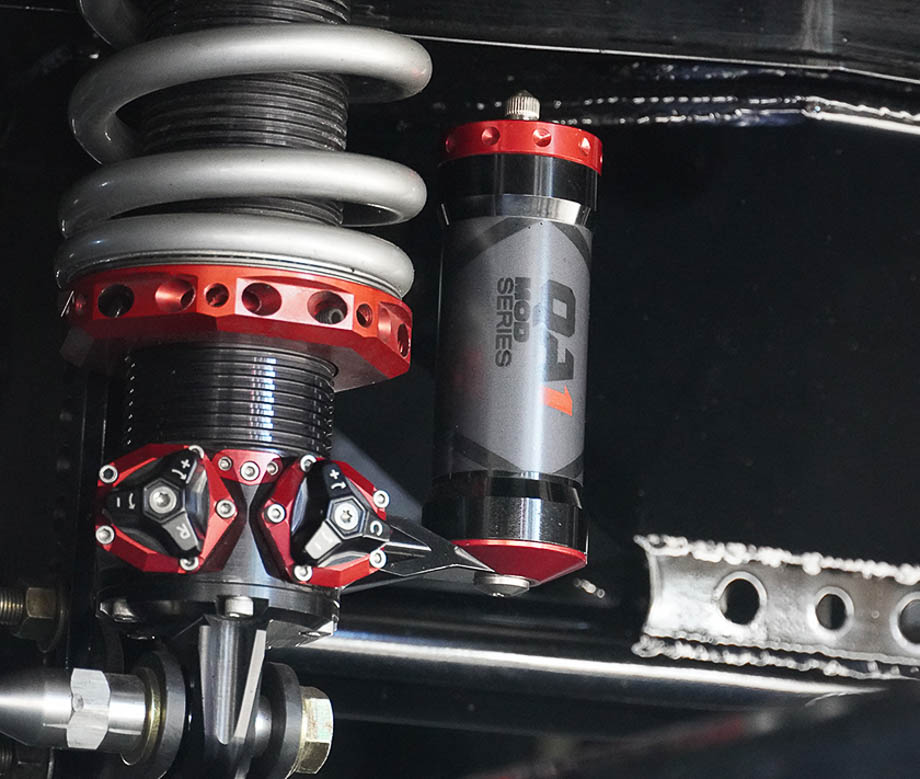
High-Speed Compression and Rebound
High-speed adjustments are crucial in performance scenarios where suspension movements happen rapidly. This includes driving over rough surfaces, hitting rumble strips on a race track, or managing uneven road conditions. The high-speed compression adjustment helps control how much force the shock absorber resists when the suspension is compressed quickly. For instance, in a road course setting, stiffening high-speed compression can prevent excessive suspension travel when the vehicle hits bumps at high speed, maintaining better control and contact with the road.
Similarly, high-speed rebound adjustment allows the shock to control how quickly the suspension extends back to its normal position after an impact. In drag racing, controlling high-speed rebound can be crucial when the rear suspension separates rapidly during launch. Increasing high-speed rebound stiffness ensures that the tires maintain contact with the track, preventing unnecessary spin or loss of traction.
Low-Speed Compression and Rebound
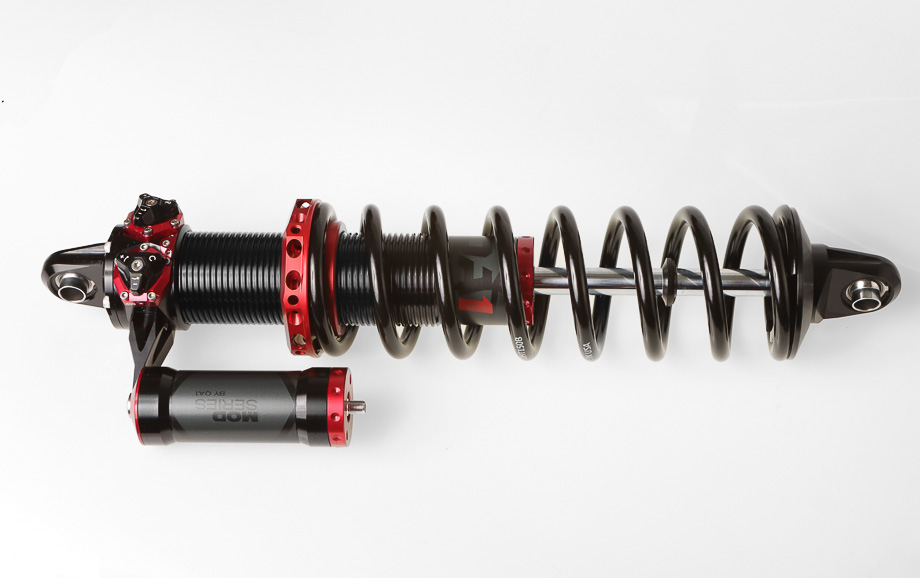
Low-speed adjustments are equally important, particularly in scenarios involving more subtle chassis movements, such as body roll, dive, and squat. For instance, low-speed compression controls how much the suspension resists movement when the vehicle leans into a corner or the rear of the car squats during hard acceleration.
Low-speed rebound helps manage the return of the chassis to its neutral position, playing a significant role in keeping the tires planted on the road during cornering. A road course driver, for example, would want to fine-tune low-speed rebound to keep the car’s nose down during acceleration, optimizing aerodynamic performance and ensuring that the front tires maintain grip through the turn.
By offering independent adjustability for both compression and rebound at both high and low speeds, QA1’s MOD series shocks provide unprecedented control over a vehicle’s suspension dynamics, allowing drivers to dial in the perfect balance for any driving scenario.
Unmatched Versatility

One of the standout features of the QA1 MOD series shocks is their incredible versatility across multiple driving applications. The MOD series shock was engineered from the outset for precise adjustability and control, with QA1’s traditional focus on quality and durability weaved into its design and materials selection so it could thrive in harsh, competitive driving scenarios.
The MOD series shocks are easily tuned to suit the demands of the environment. From hardcore drag racing to autocross, road course events, and spirited street driving, the MOD series shocks have proven highly capable, powering the most extreme of 3,000-plus-horsepower drag racing cars, to professional autocross warriors, to victory lane week in and week out.
Drag Racing
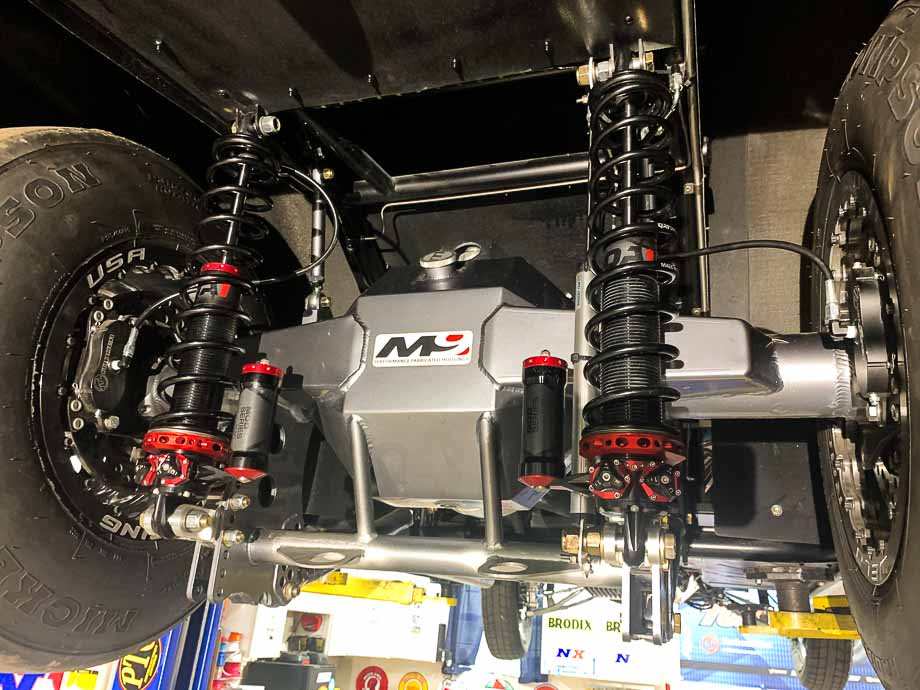
In drag racing, maintaining proper traction is crucial, especially during launch. The MOD series shocks excel here because they allow fine-tuning of the suspension to manage the dramatic chassis movements that occur during hard acceleration. For drag racers, a typical setup might include high-speed rebound adjustments to slow down the rapid extension of the rear suspension, preventing wheel spin and improving traction off the line.
Low-speed adjustments come into play when managing how the vehicle’s weight transfers during acceleration. By dialing in low-speed compression and rebound settings, drag racers can prevent excessive front-end lift and maintain consistent traction throughout the launch and down the strip.
Autocross and Road Course
In competitive autocross and road course environments, maintaining optimal tire contact with the track is essential for grip and handling precision. The MOD series shocks allow drivers to fine-tune their suspension for better cornering stability and quicker weight transfer response.

For example, in a road course scenario, high-speed compression adjustments might be used to manage the impact forces encountered when driving over rumble strips or through tight corners, while low-speed rebound adjustments can help maintain consistent tire contact during throttle application, keeping the car’s front end low and aerodynamically efficient.
Autocross drivers benefit from the adjustability by being able to fine-tune how the car handles transitions between sharp corners, allowing them to maintain control and reduce lap times.
Street Driving
What sets the QA1 MOD series apart is its ability to transition from the track to the street without sacrificing comfort. While many high-performance shocks are tuned exclusively for aggressive driving, QA1’s modular design allows the MOD series to be adjusted for daily driving comfort. By using the standard or softer valve packs, drivers can maintain a smooth, controlled ride while still having the option to quickly adjust for more performance-oriented settings when needed.
MOD Shocks: The Ultimate in Tuning Flexibility
The MOD series’ name comes from its “modular” design, featuring interchangeable QuickTune dry valve packs which allows users to swap out valve packs to soften or tighten their valving. This feature enables quick adjustments to the shock’s overall stiffness, without needing to remove the shock from the vehicle, disassemble the shock body, or mess with internal components—or worse, ship your shock to the manufacturer to have it re-valved, costing you time and money. Valve packs are available in a range from soft to extra firm, offering up to 1,300 lbs. of force at the extreme end.
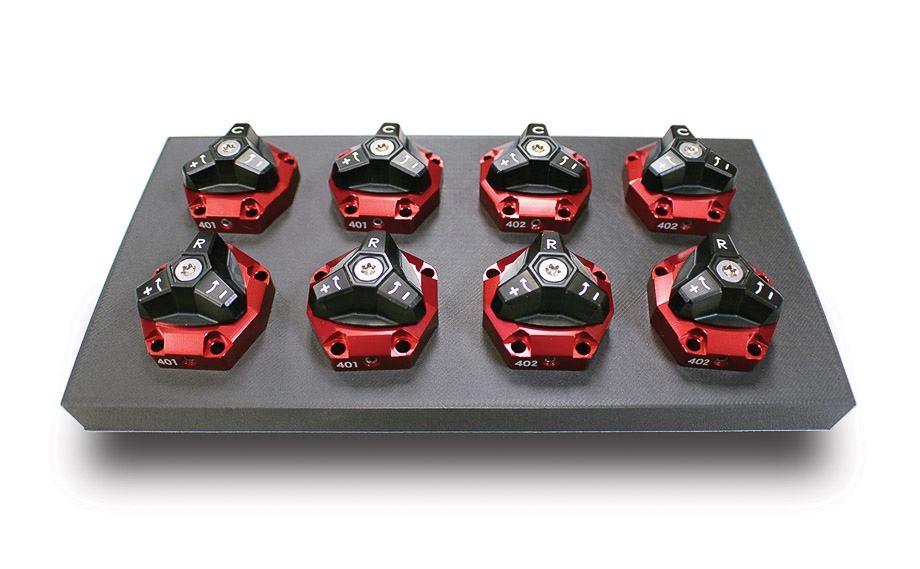
For drivers who need to adapt their vehicle to multiple scenarios—such as drag-and-drive events where a car must be street-legal but also capable of track-level performance—the MOD shocks’ easy adjustability offers a perfect solution. Users can switch from a softer setup for street driving to a firmer setup for track use without specialized tools or disassembling the shock.
Built for Durability and Performance
In addition to its adjustability, the QA1 MOD series shocks are built to withstand the rigors of high-performance driving. Featuring a fully threaded body for increased strength, the shock design minimizes weak points that could be prone to failure under high loads. The shocks are also equipped with a floating piston inside the remote canister, which prevents cavitation and maintains consistent performance during extreme use.
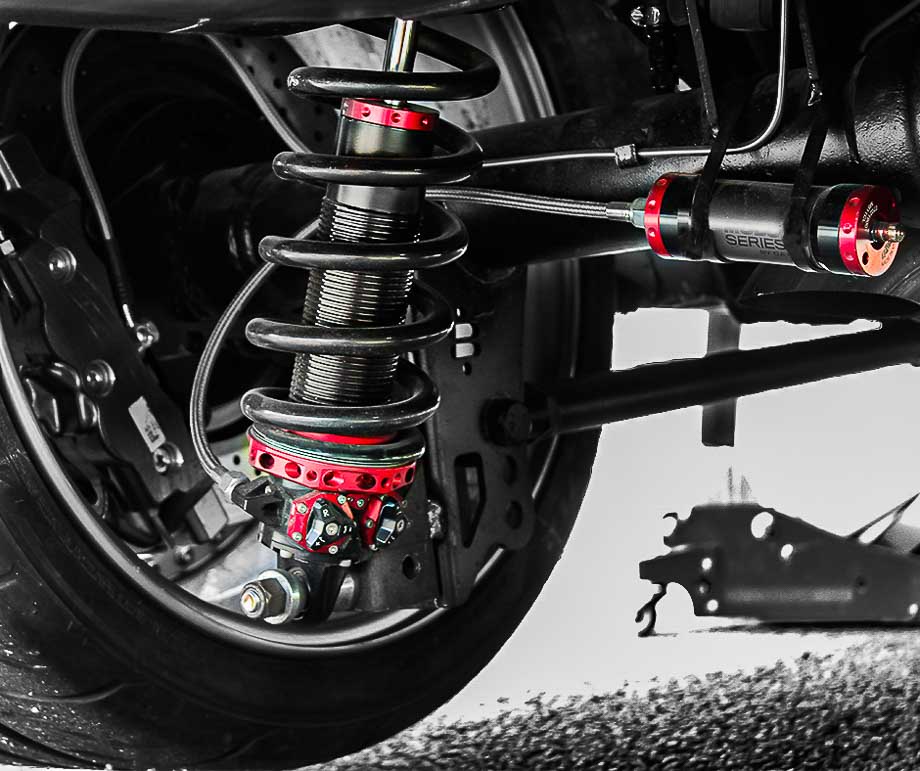
The indexable base—a clockable shock base eyelet with five adjustable positions—feature allows for easy installation in various orientations, ensuring that users can mount the shocks in the most convenient position for their vehicle while still having access to the adjustment knobs. This is particularly beneficial in applications where space is tight, and shock adjustments need to be made quickly.
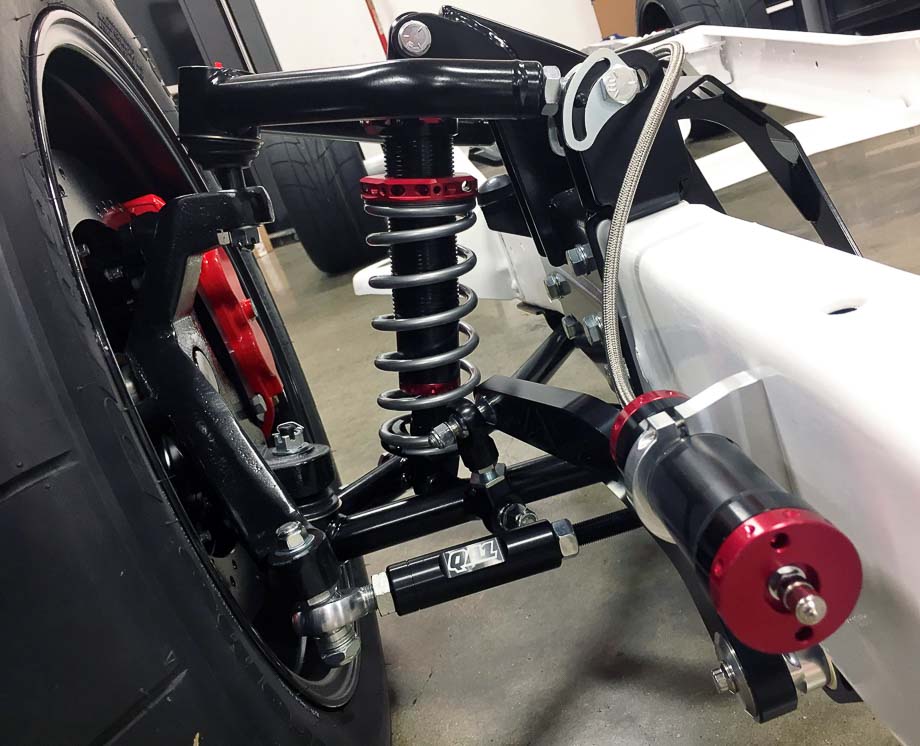
An external, nitrogen-charged canister serves to deliver proper displacement of the piston rod and prevent cavitation. The canister, which can be mounted remotely or in piggyback orientation, is charged to 60 psi—the result is an overall better feel, and more flexibility in your valving options.
Visualizing The MOD Shock's Operation
The shock dyno graph of the QA1 MOD Series shock provides a detailed analysis of how adjustments to both low-speed bleed and high-speed settings affect the shock’s performance. The graph plots force on the Y-axis, with positive values above zero representing compression force and negative values below zero indicating rebound force. The X-axis represents the velocity, measured in inches per second, indicating how fast the shock shaft is moving.
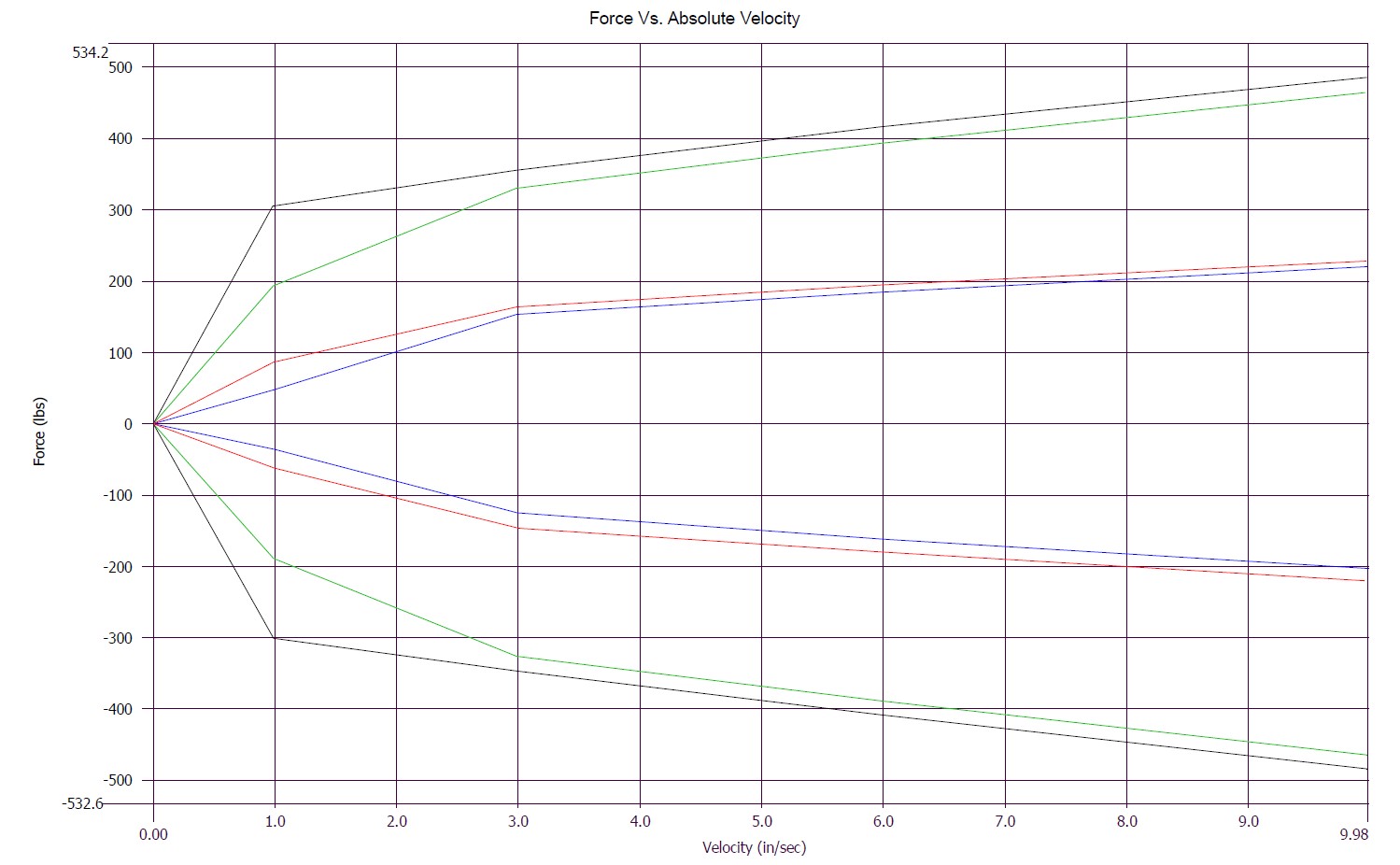
Starting with the red and blue lines, both of these represent the shock set to 10 clicks for compression and rebound adjustments. The difference between the two is that the blue line shows the shock with the low-speed bleed completely open (backed off), while the red line has one turn applied to the low-speed bleed. At lower velocities, such as one inch per second, the blue line shows about 50 pounds of compression force, but with one turn on the low-speed bleed, the red line doubles this force to nearly 100 pounds. This illustrates how closing the low-speed bleed increases resistance at lower shaft speeds, making the shock firmer.
Moving to higher velocities, such as three inches per second, the red line peaks at around 150 pounds of compression force, showing the continued effect of that one turn of low-speed bleed. When comparing the higher adjustment scenarios, represented by the green and black lines, which are set to 20 clicks instead of 10, the impact becomes even more dramatic. At 10 inches per second, the compression force jumps from around 210-220 pounds on the blue and red lines to nearly 475-500 pounds on the green and black lines. This demonstrates how the shock’s high-speed damping nearly doubles when adjusting from 10 clicks to 20 clicks.
The green line further illustrates the effect of increasing the low-speed bleed. With two turns applied, at one inch per second, the compression force reaches around 200 pounds, and with an additional adjustment to three and a half turns, the force spikes up to 300 pounds. Similarly, at two inches per second, the force increases from around 250-260 pounds to 325-330 pounds.
In summary, the dyno graph effectively shows how both high-speed and low-speed damping adjustments on the QA1 MOD Series shock significantly influence performance. Low-speed bleed adjustments primarily affect performance at lower shaft speeds, with changes being more pronounced as the bleed is closed. High-speed adjustments, particularly when increasing from 10 to 20 clicks, result in a substantial increase in force, especially at higher shaft velocities.
Graph By The Numbers
Black
Compression (C): 20 clicks and 3.5 turns (bleed closed)
Rebound (R): 20 clicks and 3.5 turns (bleed closed)
Green
C: 20 clicks and 2 turns
R: 20 clicks and 2 turns
Red
C: 10 clicks and 1 turn
R: 10 clicks and 1 turn
Blue
C: 10 clicks and 0 turns (bleed open)
R: 10 clicks and 0 turns (bleed open)
The MOD Shock Difference
The QA1 MOD series shocks offer an unparalleled level of suspension control through 4-way adjustability, making them an essential component for any serious performance enthusiast. Whether you’re launching hard at the drag strip, navigating tight corners on a road course, or driving through city streets, these shocks provide the fine-tuning ability to optimize your vehicle’s performance in any scenario.
With their robust USA-made construction, modular design, and comprehensive adjustment options, QA1 MOD series shocks are the go-to solution for anyone looking to maximize their vehicle’s suspension performance.

